German Shepherd Dogs in the Military: A Brief Historical Overview
Afola, one of the German Shepherd Dogs with the U.S. Air Force, awaits commands from her handler. (U.S. Air National Guard photo by Staff Sgt. Patrick Evenson) To learn how you can support military working dogs deployed in combat zones overseas, visit MWDTSA’s home page.
By Brad Cohick, MWDTSA
Development of German Shepherd Dogs as a Breed and Early Trials
Between 1899 and 1914, the German Shepherd Dog (GSD) was developed by Captain Max von Stephanitz of the German Army to be a working dog. Many years of selective breeding by Stephanitz honed the traits of intelligence, loyalty, dedication, and tenacity needed for military and police applications. Eager to show the prowess of the new breed, Stephanitz loaned these new dogs to German police departments–the first K9 Corps.
During this trial period with German police, these new dogs showed great promise in areas such as obedience, tracking, and protection. Stephanitz believed these dogs could also be useful to the German military. After these early trials with German Police units, Stephanitz sought to have GSDs added to German Military units. The timing could not have been better for Stephanitz and his new German Shepherd Dogs.
German Shepherd Dog (GSD) Photo: PDPics.com
World War I
In 1914, at the beginning of World War I, German Shepherd Dogs began serving with the German Military. They performed a number of tasks on the battlefield and within the ranks of the German Army. These new dogs served as sentries, messengers, and ammunition carriers. They proved themselves especially capable in aiding wounded soldiers on the battlefield. They even led injured and blinded soldiers off the battlefield to safety and medical attention. This latter act by the new breed eventually led to the development of the first seeing eye dog, an important function the GSD still serves today.
While at first amused by the use of dogs on the battlefield, the soldiers on both sides of the conflict were quickly impressed. They saw these new dogs performing numerous heroic acts under stressful and dangerous conditions. In fact, soldiers were so impressed by the dogs’ capabilities that after the conflict, the Germans, as well as the Americans and the English, began to develop their own cadre of German Shepherd Dogs for use in the military. GSDs would prove themselves again in conflict when World War II broke out in 1939.
Photo: publicdomainclip-art.blogspot.com
World War II
During WWII, the Germans again utilized GSDs, and the U.S. began deploying them, as well. U.S. GSDs served mainly as messengers, helping soldiers to communicate on the battlefield. GSDs also acted as guards and search and rescue dogs during the war. In all of these roles, the GSDs performed well. This led to the establishment of many K-9 training camps, where GSDs began training regularly for service in the U.S. Military.
Beginning in August 1942, the U.S. Army Quartermaster Corps established dog training centers at Front Royal, VA; Fort Robinson, NE; Cat Island (Gulfport), MS; Camp Rimini (Helena), MT; and San Carlos CA. The K-9 Corps initially accepted thirty-two breeds of dogs for training.
By 1944, however, the military reduced that list to seven: German Shepherds, Doberman Pinschers, Belgian Sheep Dogs, Siberian huskies, farm collies, Eskimo dogs, and Malamutes. Today, GSDs are the only breed still trained by the U.S. Military from that original list. Modern additions include the Belgian Malinois and Labrador Retrievers now being trained and mobilized as Military Working Dogs (MWDs).
Formal training
Training for dogs at these K-9 Camps lasted between 8 and 12 weeks and consisted of “basic training” to get the dogs accustomed to military life. After this initial twelve-week training period, the dogs would go on to a specialized training course in one of four areas: Sentry Dog training; Scout or Patrol Dog training; Messenger Dog training; or Mine Detection Dog training.
After successful completion of the specialized training, the dogs and their handlers would be organized into War Dog Platoons. During the course of World War II, the military deployed fifteen War Dog Platoons to the European and Pacific Theaters of War. Seven served in the European Theater and eight in the Pacific Theater. It has been said that while on patrol in the Pacific Theater with a War Dog Platoon, no units were ever ambushed thanks to the K-9s assigned to those units. Many of the dogs trained and deployed during WWII were German Shepherd Dogs.
The Korean War
After World War II, due to lack of interest and budget issues, the military cancelled and closed most of the War Dog Programs. The 26th Scout Dog Platoon, however, stayed intact to some degree and moved from Front Royal, Virginia to Fort Riley, Kansas in 1948. On December 7th, 1951, the responsibility for dog training was transferred to the Military Police Corps. The 26th Scout Dog Platoon moved again to Fort Carson, Colorado.
The 26th Scout Dog Platoon was the only active War Dog Platoon to serve in the Korean War. It served with honor and distinction in Korea from June 12th, 1951 to June 26th, 1953. Platoon members were awarded a total of three Silver Stars, six Bronze Stars for Valor, and thirty-five Bronze Stars for meritorious service. On February 27th, 1953, the Department of the Army recognized the accomplishments of the platoon in General Order No. 21.
One Dog who proved an outstanding success with the 26th Infantry Scout Dog Platoon in Korea was Scout Dog York (011X). York completed 148 combat patrols, the last one coming the day before the Armistice was signed officially ending the war. On July 1, 1957, the War Dog Training Center was moved from Fort Carson, Colorado to Fort Benning, Georgia¹.
______________
¹Webpage, 47th Scout Dog Platoon, http://www.47ipsd.us/47k9hist.htm
Vietnam
During the initial phases of the Vietnam War, German Shepherds were used mainly on Air Force installations as sentry dogs. However, as the war escalated, The United States Marine Corps entered into a service agreement with the US Army to have them train German Shepherds as scout dogs. This would be the first time since World War II that the Marines had used scout dogs. Two Marine scout dog platoons were deployed to Vietnam in February 1966.
The Marines kenneled their dogs near Da Nang at Camp Kaiser, named after the first Marine scout dog to be killed in action in Vietnam. The first Army scout dog platoon was deployed to Vietnam when the 25th IPSD arrived at Tan Son Nhut Air Base in June 1966. Between late 1965 and January 1969, twenty-two Army Scout Dog Platoons (including the 47th IPSD) and Four Marine Scout Dog Platoons were deployed to Vietnam².
______________
²Ibid
Dogs are comrades, not equipment
Over 9,000 handlers and 4,000 dogs served in the Vietnam War. The final disposition of the dogs after the war is a sad and disgraceful episode in our military’s history, however. At the time, the dogs were viewed as equipment by the military, and disposition of the dogs after the war was done in the most economical way. The dogs were given to the reluctant South Vietnamese military if possible for an unknown disposition, and at worst, were euthanized or simply left to fend for themselves. A most despicable and shameful ending for the beautiful and heroic dogs who had served our military personnel so gallantly on the battlefield.
This sad episode led to a large public outcry. In response, the military pledged not to dispose of military working dogs in the same manner. Congress eventually passed a law that allows military dogs to have an honorable retirement. President Clinton signed a bill in November 2000 (H.R. 5314), which amended title 10 of the US Code. This allowed for the adoption of retired military working dogs to former handlers and other qualified civilians.
Now, these life-saving dogs in the military can finally look forward to a comfortable and dignified retirement.
Author’s Note:
According to a former Vietnam MWD Handler here at MWDTSA, GSDs served in Vietnam not only as Scout Dogs but also as Mine & Tunnel dogs. The advent of IHS fever helped the US military decide not to bring home GSDs, since they and most US bred dogs were subject to it. After Vietnam, all dog units except AF were disbanded. Due to the “overbreeding” of American GSDs, the AF began its favoritism toward the Malinois, including a breeding program.
German Shepherd Dogs: 9/11 and Beyond
German Shepherd Dogs have been part of the US Military’s Military Working Dog program since the end of the Vietnam war, through the Cold War years and up to today’s climate of global terrorism and asymmetric threats. According to a recent article in the New York Times, “German Shepherds and Belgian Malinois are the most common breeds of dogs used by military operators, because they have the best overall combination of keen sense of smell, endurance, speed, strength, courage, intelligence, and adaptability to almost any climatic condition.”
Currently, the Army has approximately 600 dog teams, which have seen service in Iraq and Afghanistan³. The courage and loyalty of these dogs have continued to save lives and prevent injuries since creation of the K-9 Corps.
Many of the dogs on these current teams are German Shepherds, and they serve in many roles and perform many duties. Today, we can see German Shepherds performing HALO jumps with Special Operators and inserting from boats with Navy SEAL Teams. These dogs continue to be valued members of our Military and patriotic guardians of our freedom.
German Shepherd Dogs likely will have a place in our military for years to come. They have served with distinction in many theaters and in many conflicts around the world. Should you have the good fortune to meet MWD teams, please thank them for serving our country.
___________________
³U.S. Army.mil
About MWDTSA
The Military Working Dog Team Support Association is an all-volunteer 501(c)(3) nonprofit serving MWD teams in the Army, Navy, Air Force, Marines, and Coast Guard. With your support, we send quarterly care packages to MWD teams deployed in global combat zones. Additionally, we boost morale with stateside MWD kennel visits. We promote veteran causes and memorials, including recognition of retired MWDs. And we host education events and create content to educate the public about the jobs of MWD teams. To learn more, visit MWDTSA’s home page.
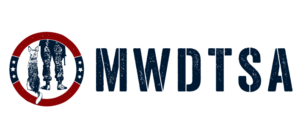
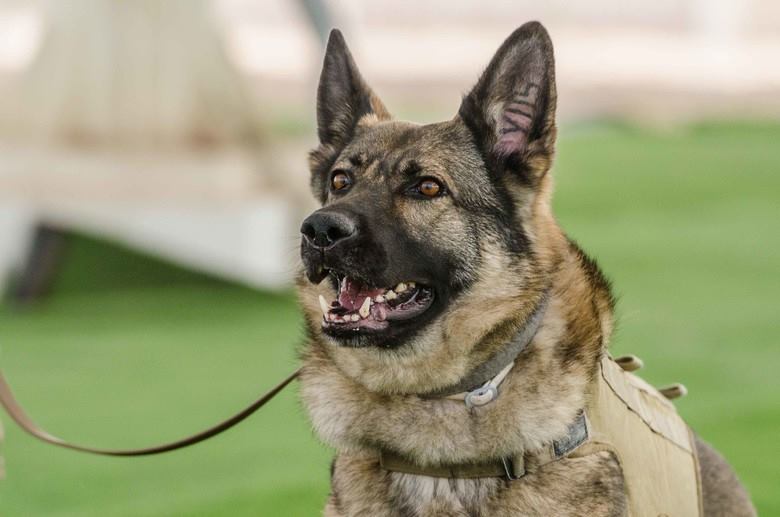
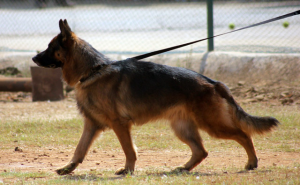
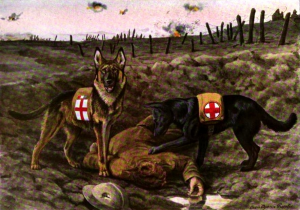
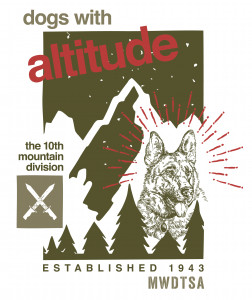
These dogs are awesome and need to be recognized just like a human soldier. When the canine soldier has served his time ; he needs to be able to go back to his original soldier at a very inexpensive price.
I agree with Joyce’s comment that these beautiful military dogs should be given the admiration and respect they deserve and have certainly earned. Unlike human soldiers, they do not have the option of whether they want to serve in the military, and should be given a comfortable and dignified retirement.
I have learnt so much from this publication. These dogs really are like humans and they take instructions seriously better than other humans. They deserve good treatment and also their price should be high indeed.
Significant information should be added to the “Vietnam” section, in part:
* For the US Army, Scout Dog Platoons were generally assigned one platoon (approximately 30 men and dogs) per each brigade in each division.
* Handlers and new dogs coming into Vietnam were sent to the US Army Dog Training Detachment (USARV DTD) at Bien Hoa Air Base where dogs were matched with new handlers. DTD also trained Mine and Tunnel Dogs (now Explosive Detector Dogs) which were assigned to Scout Dog Platoons.
* Handlers and dogs from in-country units needing supplemental training were sent to USARV DTD for refresher training.
* Scout Dogs and Mine and Tunnel Dogs were Infantry.
* Army Sentry Dogs were Military Police.
* In fairness, the Army also had per each division a Combat Tracker Platoon which used, in addition to human trackers, Labrador Retrievers. Some Tracker platoons also used Scout Dogs with tracking teams.
* Combat Tracker Platoons were Infantry units.
* Approximately 250 Scout and Tracker dogs were returned to the US. The remainder were given to the Vietnamese Army or euthanized.
I trained at the US Army Dog Training Detachment, FT Benning, GA, prior to deploying to Vietnam where I initially served as a Combat Tracker Platoon Commander and then as Training Officer, USARV DTD.
Anyone desiring information on how to support our amazing Military Working Dogs should contact the nonprofit 501c3 Military Working Dog Team Support Association, MWDTSA.org
There is a great deal to add, but the above information completes some blanks.
I am doing a research project of gsds from inception until 1914, how many gsds were utilized in WWI?
Ronda, the United States did not have a formal War Dog program until WWII, but the Germans utilized GSDs in WWI. The United States War Dogs Association estimates the Germans had 30,000 dogs on the battlefield in WWI (see: https://www.uswardogs.org/war-dog-history/world-war-1/). However, as shown in these photos, they used a variety of breeds — not just GSDs: https://www.youtube.com/watch?v=2ZbW4TggCEk. One blogger writes, “In the First World War alone, 48,000 (GSDs) were enlisted in the German army” (see: https://sniffingthepast.wordpress.com/2016/02/03/german-shepherd-or-alsatian/) We have not been able to verify this number. If you find more definitive information in your research, we hope you’ll share it here. Likewise, if we find additional sources, we will post them. Thanks for reaching out to us with your query.
Yes, German Shepherds are commonly described as self-assured, excellent guard dogs and easy to train. But they also hold a variety of wonderful characteristics such as intelligent, alert, watchful, curious, obedient, courageous and confident. These amazing characteristics make them well-rounded and equally able to adapt as a working dog as well as an excellent family dog.
We love our full breed GS – we have had three others- loyal to the core. ❤️
-Christine